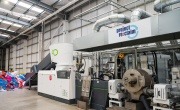A yen for recycling
The Japanese are famously adept at making electronic equipment, but how good are they at recycling it? Will Simpson finds out
 This article was taken from Issue 83
This article was taken from Issue 83Every country’s recycling structure is influenced by a combination of its history, culture and geography. Japan’s experience has been deeply coloured by the fact that it has almost double the population of the UK (128 million according to its 2010 census) and, though it is much larger in geographic terms, its mountainous landscape means landfill space is at a premium. Recycling, then, is taken seriously. How seriously can be gauged by the fact there is even a Japanese word with no real English equivalent – ‘mottanai’ – that conveys a sense of regret concerning waste.
Certainly, in terms of e-waste, Japan has long been ahead of the curve. Its equivalent to the Waste Electrical and Electronic Equipment (WEEE) Regulations, Home Appliance Recycling Law (HARL) came into force in 2001, five years ahead of the UK. Crucially, this enshrined joint responsibility among consumers, retailers and manufacturers, respectively.
“These three stakeholders have their own individual responsibilities”, explains Shigehiko Nakayama, from Panasonic’s Recycling Business Promotion Office. “Consumers have to hand over used items to the retailers and they must pay a recycling fee. The retailers have to take back disposed items to manufacturers and the manufacturers have to take back all these items and ensure that they are properly treated.”




